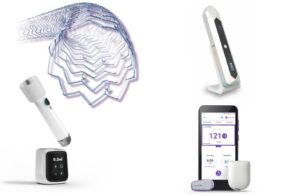 From wearable insulin delivery devices to drug-eluting implants and everything in between, drug delivery innovation never stops.
From wearable insulin delivery devices to drug-eluting implants and everything in between, drug delivery innovation never stops.
Vaccines, life-saving therapeutics, vision-correcting drugs and more are being developed and marketed for delivery with all kinds of technologies.
More than a year ago, we compiled a list of eight drug delivery innovations you need to know. With some updates on some of those technologies, plus introductions to others, here are some more impressive developments you should keep an eye on:
1. Needle-free delivery
Vaccines have become a major talking point over the past couple of years amid the COVID-19 pandemic and a number of companies are working on ways to deliver them, as well as other forms of medication, through different avenues.
A major speed bump in vaccine hesitancy can be fear of needles, so the introduction of needle-free drug delivery could make big waves in the space.
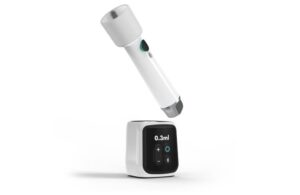
PharmaJet’s needle-free systems have been incorporated into clinical studies for multiple RNA and DNA vaccine and therapeutic development programs thanks to collaborations with more than 50 pharmaceutical partners.
“An increasing amount of data is showing superior efficacy over other delivery methods with nucleic acid-based platforms for vaccines, therapeutics, and personalized medicine,” PharmaJet President and CEO Chris Cappello said in an April news release.
Last month, NovaXS unveiled a prototype for its “smart” needle-free delivery technology.
Formed at the University of California, Berkeley, NovaXS designed its patent-pending Telosis technology to administer a narrow stream of medication without a needle in 0.3 seconds and to analyze injection data to allow for smarter health decisions.
2. Autoinjectors
Autoinjector technology isn’t new, but a few companies have debuted their latest innovations, with one even earning an award.
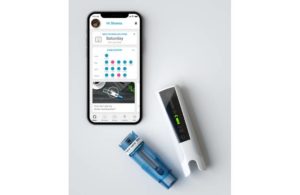
A few months later, Phillips-Medisize, a Molex company, launched its Aria autoinjector platform, introducing a small, simple smart injection device with a reusable electronic drive unit and single-use, disposable cassettes.
The company designed the Aria autoinjector to mirror the compact size and look and feel of existing disposable autoinjectors with straightforward operation powered by sound and light signals indicating dose progress and completion — and simple sleeve-triggered activation needle safety features.
Earlier this year, Jabil launched its Qfinity auto-injector platform for simple subcutaneous drug self-administration at a lower cost than market alternatives.
The autoinjector space seems to be picking up steam and will be an intriguing one to watch.
3. Next-gen diabetes tech
The past couple of years have been filled with non-stop excitement around diabetes technology, with so many of the big players in the space bringing forward new innovations. A range of insulin pumps, continuous glucose monitors (CGMs) that connect to the insulin pumps, and more have come to the fore.
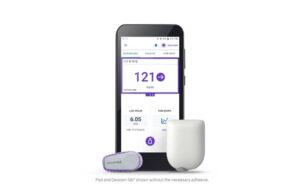
Other diabetes technologies to keep an eye on include CeQur’s Simplicity insulin delivery device, Bigfoot Biomedical’s Bigfoot Unity holistic diabetes management offering and an all-in-one diabetes platform being developed at the Massachusetts Institute of Technology (MIT).
Finally, there are a couple of big names aiming to clear the final vaunted FDA hurdle soon — Dexcom’s next-generation G7 CGM and Medtronic’s MiniMed 780G insulin pump with the Guardian 4 sensor are both on the cusp, with authorization on the horizon.
4. Drug-eluting contact lenses
Johnson & Johnson Vision Director of Clinical Science Dr. Brian Pall told Drug Delivery Business News earlier this year that efforts to advance the idea of delivering medication through contact lenses were ongoing as far back as the 1960s.
After several decades, J&J Vision became the first company to bring such technology to the U.S. market, garnering FDA approval in March, having already picked up Health Canada approval in April 2021, just one month after the product received regulatory approval in Japan.
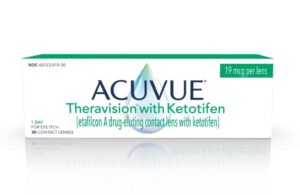
The daily disposable contacts are indicated for the prevention of ocular itch due to allergic conjunctivitis. They provide vision correction in patients who do not have red eyes, who are suitable for contact lens wear and who do not have more than 1.00 D of astigmatism.
J&J Vision’s innovative offering was recognized as a winner of Fast Company’s 2022 World Changing Ideas Awards.
Other drug-eluting technology for the eye is out there, with Genentech receiving FDA approval for an implant in October 2021 and Eyevensys developing a gene therapy for ocular delivery. It will be an interesting space to watch as more innovations come through.
5. Next-gen drug-eluting stents
Stents are far from new technology, but some of the newer offerings on the market are making their mark.
A recent study of Medtronic’s Resolute Onyx drug-eluting stent (DES) in percutaneous coronary interventions (PCI) in the left main artery demonstrated strong safety and efficacy, plus 98.7% device success in a highly complex patient population. That came just one week after the FDA approved Medtronic’s Onyx Frontier DES, which leverages the same stent platform as Resolute with an enhanced delivery system for improving deliverability and increasing acute performance, even in the most challenging of cases.
The company said Xience Skypoint stents are now the only drug-eluting stents (DES) approved in the U.S. that improve access to care, enabling physicians to deliver advanced technology to patients with larger blood vessels. The expanded sizes are high bleeding risk (HBR)-indicated and represent the only DES with both one-month and three-month dual antiplatelet therapy (DAPT) labeling.
Another DES that could be coming soon is made by Cook Medical, which picked up FDA breakthrough designation for its below-the-knee DES for treating peripheral artery disease (PAD).
6. Vivera’s smart dosing delivery system
An intriguing technology to look out for comes from Newport Beach, California-based Vivera, which in May picked up a third U.S. patent for its Zicoh electronic dose-controlled drug delivery device portfolio.
The latest patent secured Zicoh’s rights as a smart dosing system with automated delivery, measurement, and management for oral format medications, including pills, capsules and tablets. Vivera designed Zicoh to enable real-time communication through the drug supply chain, from manufacturers, distributors and wholesalers to pharmacists, providers, physicians, caregivers and patients.
Zicoh can be programmed to dispense the medication dosage type, amount and frequency according to providers’ orders to ensure compliance with prescriptions while implementing controls to help prevent medication misuse and abuse.
The company plans to have a working prototype for Zicoh in late summer 2022.

